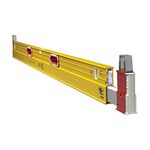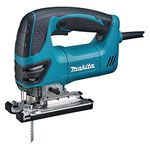The Eight Best Power Planers
Whether you're hanging doors or framing walls, here are the top picks from a crowded field.

Synopsis: After trying out 15 handheld power planers, our reviewer focuses on the eight best. He explains which features are most important and why, then evaluates each planer accordingly. A sidebar on cordless planers points you toward the best choice there as well.
When my wife and I built our new home, the first thing I completed was the workshop. I overcame her skepticism with the promise that getting the shop set up and running would make me far more efficient at finishing the house. But what I didn’t expect was that it also would make me tired. On the frequent occasions when a piece of trim didn’t fit perfectly, I trudged back to the shop’s stationary machines to shave off the proverbial hair. I was dreaming of a less strenuous existence when the UPS driver dropped off 15 planers for this survey. That’s when it dawned on me: Having a 400-lb. jointer is nice, but a handheld planer can save me a lot of footwork. So with the energy of a lazy person seeking a shortcut, I put each tool through its paces.
Every planer got a full workout
As each tool arrived, I studied its operator’s manual, then logged its vital signs: size, power, flatness of shoes, factory blade setting, and general out-of-the-box quality. I took each tool as it came to me and didn’t try to improve it by making any adjustments beyond what the manual specified. After these checks, I started making shavings. I plowed through hardwood, softwood, and plywood. I evaluated each tool’s ability to straighten rough framing stock as well as to put smooth edges on finish work. I continually fiddled with the depth controls, changed all the blades at least twice, and carved enough rabbets to populate a petting zoo. Finally, to minimize any personal bias, I loaned out the planers to a crew of seasoned builders and collected their impressions.
By the time the dust settled, I found that eight of the tools were clearly superior to the others, and they are the ones I’ve chosen to recommend here.
Top picks have all the best features
The most important parts of a planer are the shoes: a fixed shoe in the rear and an adjustable shoe in front that determines depth of cut. To ensure precise results, the blades must be installed flush with the rear shoe, and both shoes must be parallel with each other. Using a straightedge and a feeler gauge, I checked both shoes for flatness and alignment throughout their depth-of-cut range. Although few of the tools could claim absolute perfection — a 0.005-in. cup here, a 0.009-in. twist there — in practice, I found that except for the Grizzly tools, all were close enough for fine trim work. Out-of-the-box blade settings, however, were surprisingly poor: 11 of the 15 tools tested required adjustment to correct obvious misalignments.
Depth-of-cut control
The best planers had accurate, easy-to-read scales and reliable knobs that spanned the machines’ full cutting ranges in one turn or less. The designs that required multiple revolutions wasted time because I had to remember if I was currently one turn or two turns from the depth I was looking for.
For more photos and details, click the View PDF button below:
Fine Homebuilding Recommended Products
Fine Homebuilding receives a commission for items purchased through links on this site, including Amazon Associates and other affiliate advertising programs.

Stabila Extendable Plate to Plate Level

Milwaukee Cordless Shop Vac (0880-20)

Makita Top-Handle Jigsaw (4350FCt)


























